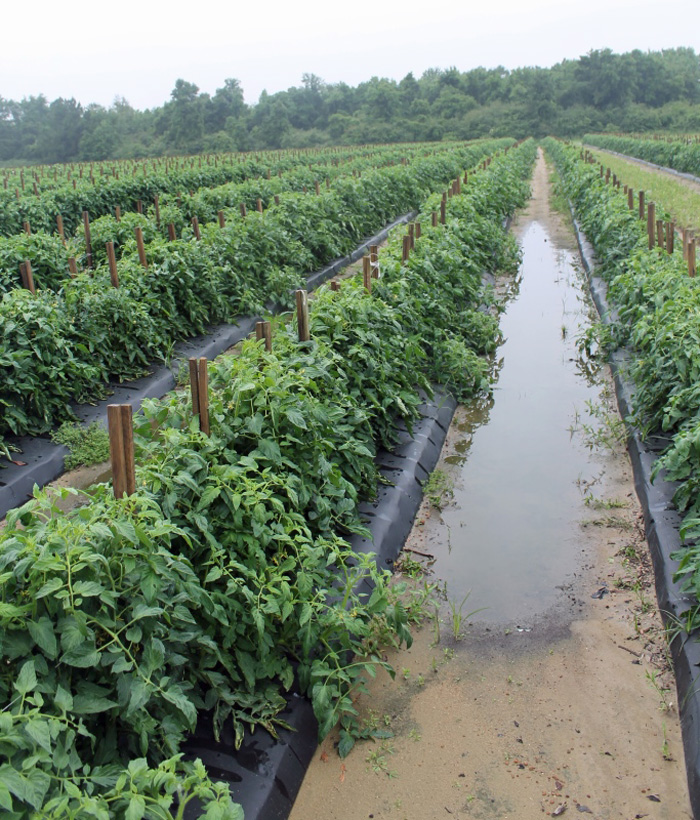With the recent frequent rains and hot temperatures, the incidence of buckeye rot on field tomatoes has increased in Holmes County, especially on tomatoes that were not planted on plastic mulch.
This disease in tomatoes is caused by Phytophthora parasitica, and typically shows up on fruit that are touching the soil or in the lower canopy of the plant. This point of contact allows the fungus to enter, causing a slight brownish spot. As the fungus develops and the spot enlarges, a series of irregular, brown-to-light colored concentric bands are produced, forming the buckeye effect as seen in the photo. The fruit decays very rapidly and breaks down in a soft rot.
All stages in the growth of the tomato fruit are attacked by the fungus. In some cases, when the fruit remains damp and moist for a day or two, the concentric zone effect may be more indistinct, but invasion of the fruit by the fungus can be quite rapid.
The use of plastic mulch is a very important cultural practice to help control fruit rots in tomato fields. Soil rot (Rhizoctonia solani) and buckeye rot (Phytophthora parasitica) are two soil borne pathogens that caused great losses before plastic mulch was used to prevent contact between fruit and the soil. Good field drainage will also help reduce incidence of this disease.

Plastic mulch is a very important cultural practice to help control fruit rots in tomato fields. Photo credit: Matt Orwat
Fungicides are primarily preventative: They must be applied before the pathogen arrives on the foliage, to have effective disease control. Timing of the sprays is very important.
For more information, download:
Disease Control for Florida Tomatoes
Tomato Production Chapter Vegetable Handbook
- Wild Turkey Biology and Habitat Management - March 20, 2020
- Pond Weed Control – Common Salvinia - October 11, 2019
- Renovating Centipede Grass Infested Pastures - April 26, 2019

